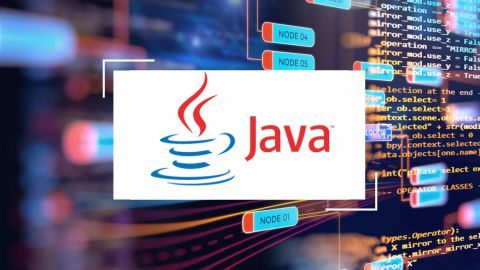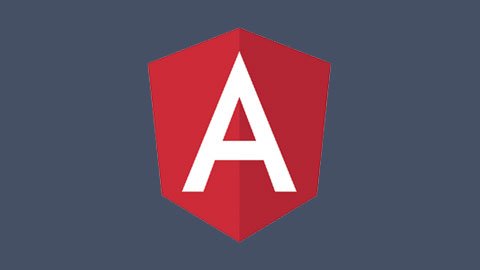What you'll get
- Job Credibility
- Certification Valid for Life
- On-demand video*
- E-Book
- Self-Paced Learning
- Certificate of Completion
Exam details
- Mode of Exam : Online
- Duration : 1 Hour
- Multiple Choice Questions are asked
- No. of Questions are asked : 50
- Passing Marks : 25 (50%)
- There is no negative marking
Are you finding the best Node.Js online course to become a Node.Js developer? Welcome to this online course, which deals with server-side theories and concepts. In this course, you will understand the fundamentals of Node.Js from the beginning. So if you are a complete newbie or have a basic understanding of programming language, then also you will not have any difficulties during the program. If you will face any doubt, then the expert will solve that as well.
Why should you learn Node.Js?
Nowadays, Node.Js is fastly growing in the industry of web server technology. Node developers are one of the highest paid developer because with this web server facility they can build a reliable, smooth and high-quality web application.
What will you learn in this online Node.Js training?
- Installation of Node.Js IDE & NPM
- Explore modern concepts of JavaScript
- Understanding Node.Js event loop
- Asynchronous and Synchronous function
- HTTP response codes
- Learning CSS, HTTP, JavaScript, and Git
- Building web developing path
- Building light and fast application
- Working with data and testing of data
- Start Using MongoDB with Node.Js
- Templating and many more things will be taught.
This course will help you understand crucial concepts of Node practically and you will have detailed examples of building websites, microservices and APIs. After this online program you can opt for full stack web or API developer, or start your career in development of mobile or web applications.
Course Content
-
Section Intro: Installing and Exploring Node.js
-
Installing Node.js and Visual Studio Code
-
What is Node.js?
-
Why Should I Use Node.js?
-
Your First Node.js Script
-
Section Intro: Node.js Module System
-
Importing Node.js Core Modules
-
Importing Your Own Files
-
Importing npm Modules
-
Printing in Color
-
Global npm Modules and nodemon
-
File System and Command Line Args (Notes App)
-
Section Intro: File System and Command Line Args
-
Getting Input from Users
-
Argument Parsing with Yargs: Part I
-
Argument Parsing with Yargs: Part II
-
Storing Data with JSON
-
Adding a Note
-
Removing a Note
-
ES6 Aside: Arrow Functions
-
Refactoring to Use Arrow Functions
-
Listing Notes
-
Reading a Note
-
Section Intro: Debugging Node.js
-
Debugging Node.js
-
Error Messages
-
Section Intro: Asynchronous Node.js
-
Asynchronous Basics
-
Call Stack, Callback Queue, and Event Loop
-
Making HTTP Requests
-
Customizing HTTP Requests
-
An HTTP Request Challenge
-
Handling Errors
-
The Callback Function
-
Callback Abstraction
-
Callback Abstraction Challenge
-
Callback Chaining
-
ES6 Aside: Object Property Shorthand and Destructuring
-
Destructuring and Property Shorthand Challenge
-
Bonus: HTTP Requests Without a Library
-
Section Intro: Web Servers
-
Hello Express!
-
Serving up HTML and JSON
-
Serving up Static Assets
-
Serving up CSS, JS, Images, and More
-
Dynamic Pages with Templating
-
Customizing the Views Directory
-
Advanced Templating
-
404 Pages
-
Styling the Application: Part I
-
Styling the Application: Part II
-
Section Intro: Accessing API from Browser
-
The Query String
-
Building a JSON HTTP Endpoint
-
ES6 Aside: Default Function Parameters
-
Browser HTTP Requests with Fetch
-
Creating a Search Form
-
Wiring up the User Interface
-
Section Intro: Application Deployment
-
Joining Heroku and GitHub
-
Version Control with Git
-
Exploring Git
-
Integrating Git
-
Setting up SSH Keys
-
Pushing Code to GitHub
-
Deploying Node.js to Heroku
-
New Feature Deployment Workflow
-
Avoiding Global Modules
-
Section Intro: Databases and Advanced Asynchronous Development
-
MongoDB and NoSQL Databases
-
Installing MongoDB on macOS and Linux
-
Installing MongoDB on Windows
-
Installing Database GUI Viewer
-
Connecting and Inserting Documents
-
Inserting Documents
-
The ObjectID
-
Querying Documents
-
Promises
-
Updating Documents
-
Deleting Documents
-
Section Intro: REST APIs and Mongoose
-
Setting up Mongoose
-
Creating a Mongoose Model
-
Data Validation and Sanitization: Part I
-
Data Validation and Sanitization: Part II
-
Structuring a REST API
-
Installing Postman
-
Resource Creation Endpoints: Part I
-
Resource Creation Endpoints: Part II
-
Resource Reading Endpoints: Part I
-
Resource Reading Endpoints: Part II
-
Promise Chaining
-
Promise Chaining Challenge
-
Async/Await
-
Async/Await: Part II
-
Integrating Async/Await
-
Resource Updating Endpoints: Part I
-
Resource Updating Endpoints: Part II
-
Resource Deleting Endpoints
-
Separate Route Files
-
Section Intro: API Authentication and Security
-
Securely Storing Passwords: Part I
-
Securely Storing Passwords: Part II
-
Logging in Users
-
JSON Web Tokens
-
Generating Authentication Tokens
-
Express Middleware
-
Accepting Authentication Tokens
-
Advanced Postman
-
Logging Out
-
Hiding Private Data
-
Authenticating User Endpoints
-
The User/Task Relationship
-
Authenticating Task Endpoints
-
The User/Task Relationship
-
Section Intro: Sorting, Pagination, and Filtering
-
Working with Timestamps
-
Filtering Data
-
Paginating Data
-
Sorting Data
-
Section Intro: File Uploads
-
Adding Support for File Uploads
-
Validating File Uploads
-
Validation Challenge
-
Handling Express Errors
-
Adding Images to User Profile
-
Serving up Files
-
Auto-Cropping and Image Formatting
-
Section Intro: Sending Emails
-
Exploring SendGrid
-
Sending Welcome and Cancelation Emails
-
Environment Variables
-
Creating a Production MongoDB Database
-
Heroku Deployment
-
Section Intro: Testing Node.js
-
Jest Testing Framework
-
Writing Tests and Assertions
-
Writing Your Own Tests
-
Testing Asynchronous Code
-
Testing an Express Application: Part I
-
Testing an Express Application: Part II
-
Jest Setup and Teardown
-
Testing with Authentication
-
Advanced Assertions
-
Mocking Libraries
-
Wrapping up User Tests
-
Setup Task Test Suite
-
Testing with Task Data
-
Real-Time Web Applications with Socket.io (Chat App)
-
Section Intro: Real-Time Web Applications with Socket.io
-
Creating the Chat App Project
-
WebSockets
-
Getting Started with Socket.io
-
Socket.io Events
-
Socket.io Events Challenge
-
Broadcasting Events
-
Sharing Your Location
-
Event Acknowledgements
-
Form and Button States
-
Rendering Messages
-
Rendering Location Messages
-
Working with Time
-
Timestamps for Location Messages
-
Styling the Chat App
-
Join Page
-
Socket.io Rooms
-
Storing Users: Part I
-
Storing Users: Part II
-
Tracking Users Joining and Leaving
-
Sending Messages to Rooms
-
Rendering User List
-
Automatic Scrolling
-
Deploying the Chat Application
Reviews
Related Courses
1- Select your Course for Certification.
2- Click on Buy Now.
3- Proceed to Checkout If You are registered User or Create an Account.
4- Choose Your Billing Address or Add New and Click on Continue.
5- Choose Payment Method and Click on Continue to Complete Your Payment.
6- After Successful Payment You will receive an Email regarding your order, and You can login your account in order to access the course and its exam.
7- After, You Finish an exam, and qualified it, you will be able to download your certificate immediately.
To buy a course, you need to click on the ‘Buy Now’ option available on the course page. After clicking on it, you can proceed ahead and make the payment of the course using a convenient mode of payment to buy it. For Help Watch a video here
After you have selected the course
that you wish to purchase, click on the ‘Buy Now’ option on the course page.
This will redirect you to the Checkout page. In case you wish to apply any
coupon code, the page will provide you an option to do so.
If you are new to the site, you will
be asked first to create an account, In this case, you will have to fill a form.
On the Checkout page, simply select
the payment mode that you wish to use for purchasing the course. The payment
options available are Credit/ Debit Card, Internet Banking, as well as UPI.
After making the payment successfully, you will receive a confirmation message as well as an email at the registered email address.
How To Make Payment of The Course - Watch Video
You can immediately start the course as per your convenience by going on the dashboard and entering the correct credentials. Check, How can I login to my course.
The
courses available here are completely online and, thus, offer the
flexibility to one to complete the course within his/her time. The course
duration mentioned in the course syllabus would be printed on the course certificate.
However, the user can finish the course in lesser time as well.
Step 1 - Login Your Account with the credentials (Email - ID and Password) you have created at the time of registration
Step 2 - Click on "MY COURSES"
Step 3 - Navigate the left panel of your browser screen and scroll down
Step 4 - At last, you will see EXAM option, click on that and the exam screen will appear with information such as No. of questions and exam time.
Step 5 - If you are preparing for it, Then Click on START EXAM. Know more, How To Take Exam
The minimum passing marks percentage for each course is 50%. Only once
the user passes the exam, he/she is eligible for the Certificate.
For verification of the course certificate, you have to simply scan the QR code or can use Certificate No to verify your certificate.
Click here to verify your certificate


-480x270.jpg)
